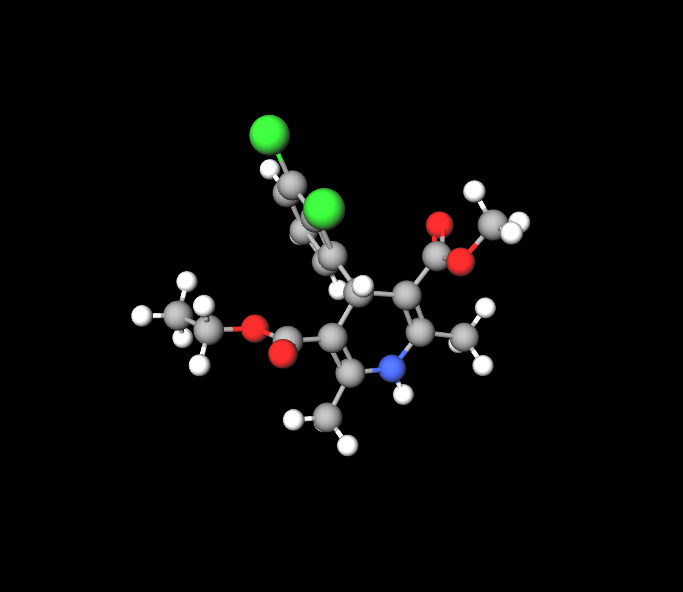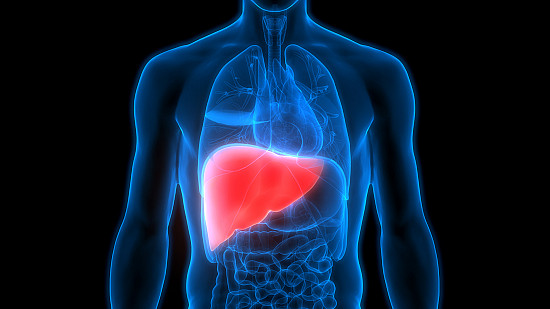Plendil, Felodipine
- I. Introduction
- II. Composition and Formulation
- III. Felodipine Uses
- IV. Off-Label Uses of Felodipine
- V. Dosage and Administration
- VI. Administration in Special Populations
- VII. Drug Interactions
- VIII. Felodipine side effects
- IX. Important Precautions
- X. Handling and Storage
- XI. Overdose Management
- XII. Warnings and Contraindications
- XIII. Careful Administration
I. Introduction
Overview of Felodipine (Plendil)
Plendil, also known as Felodipine, is a vasodilator commonly prescribed for treating high blood pressure and preventing angina. It falls under the category of drugs called calcium channel blockers, which work by relaxing and widening blood vessels to enhance circulation.
Therapeutic Classification and General Usage
- Therapeutic Category: Calcium channel blocker
- Main Applications: Managing blood pressure (hypertension) and preventing angina (chest pain)
II. Composition and Formulation
Active Ingredient: Felodipine
The main ingredient in Felodipine directly affects the muscles in blood vessels, causing them to relax and leading to widened blood vessels and reduced resistance in the outer parts of the circulatory system.

Inactive Ingredients and Their Roles
The components that are not actively involved differ depending on the formulation. They typically consist of ingredients that assist in delivering the drug and maintaining its stability, such as microcrystalline cellulose, lactose, and polyethylene glycol.
Available Dosage Forms
Extended release tablets are created to release the medication gradually over a duration making it easier for patients to follow the treatment regimen and ensuring consistent levels of medication, in the bloodstream.
III. Felodipine Uses
Primary Indications: Hypertension and Angina
Felodipine is commonly used as a first-line treatment for blood pressure to lower the chances of stroke and heart problems. Doctors also recommend it as a measure for angina to alleviate chest discomfort related to heart issues.
Mechanism of Action in Blood Pressure Control
Benefits in Cardiovascular Health
- Arterial pressure reduction leads to the decreased occurrence of cardiovascular events.
IV. Off-Label Uses of Felodipine
Exploration of Common Off-Label Conditions Treated
Sometimes, Felodipine is prescribed for conditions like the Raynaud phenomenon and congestive heart failure, even though it's not officially approved for those uses. Its ability to widen blood vessels can be helpful, in these situations.
Clinical Evidence Supporting These Uses
While not yet given the light, for all secondary purposes, recent research indicates promising advantages that deserve deeper exploration.
Guidelines and Expert Opinion on Off-Label Prescribing
Medical recommendations are careful. They recognize the possibility of using Felodipine when other treatments have not produced the desired results.
V. Dosage and Administration
Standard Dosing Guidelines for Adults
The usual initial dosage for blood pressure is 5 mg, per day and it can be changed depending on how well the treatment works and how well the patient tolerates it.
Adjustments for Specific Conditions
Patients with liver issues may require changes in their medication dosage to avoid the risk of much drug buildup and potential harm.

Tips for Effective Administration
- Take this medication on a stomach or with a small meal to improve its absorption.
- It's best to steer off grapefruit juice as it may disrupt how Felodipine is metabolized.
VI. Administration in Special Populations
Elderly Patients
Consider beginning with a dose to accommodate reduced liver function and heightened sensitivity to changes in blood pressure.
Monitoring Requirements
It's advisable to check your blood pressure and heart rate to make sure everything is safe and working well.
Pregnant Women and Nursing Mothers
The safety of Felodipine in women has not been confirmed. It is advisable to use it during pregnancy only if the benefits outweigh the risks to the fetus.
Effects on Lactation and Nursing Considerations
It's uncertain if Felodipine passes into breast milk, so it's advised to be careful when giving it to nursing mothers.
Children
The safety and efficacy of children have not been proven.
VII. Drug Interactions
Common Drug-Drug Interactions and Their Management
When taking Felodipine along with CYP3A4 inhibitors like ketoconazole, there is a possibility of Felodipine levels in the blood. It is important for patients to be closely watched and adjustments, to the dosage may be needed.
Interaction with Food and Lifestyle Choices
It's important to let patients know that they should steer clear of grapefruit juice because it can have an impact, on how Felodipine is processed in the body. This could result in levels of the drug and stronger effects.
Recommendations for Avoiding Significant Interactions
- Ensure your routines and eating habits remain steady to keep the effects of medications stable.
- Always talk to your healthcare professionals about any medications to avoid any potential interactions.
Alternative drug to felodipine
Other medications, such as amlodipine, nifedipine, lacidipine, and lercanidipine, work to reduce blood pressure similarly to felodipine. Additionally, there are alternative medications available to help lower your blood pressure.
VIII. Felodipine side effects
Common Side Effects
Felodipine, similar to drugs used to treat high blood pressure, often causes mild and temporary side effects such as headaches, dizziness, and a warm or flushed feeling as it widens blood vessels.

Frequency and Mild Symptoms
- 20% of patients may experience headaches.
- 10-15% of individuals who use the medication might feel flush sensations and dizziness.
Management Strategies for Common Adverse Effects
Management involves reassurance, symptomatic treatment, and adjusting the dosage if necessary. For persistent symptoms, a consultation with a healthcare provider is recommended to tailor the therapeutic approach.
Severe Adverse Reactions
In instances, Felodipine may lead to severe responses like low blood pressure, rapid heart rate, and occasional worsening of angina in individuals with advanced coronary artery disease.
Rare but Serious Side Effects
Rarely do such serious consequences occur. They necessitate prompt medical assessment.
When to Seek Medical Attention
If individuals encounter signs such as chest discomfort, passing out, or an unusually fast or slow heartbeat, it's crucial for them to promptly seek medical attention.
IX. Important Precautions
Cardiovascular Precautions
Patients who have heart failure or aortic stenosis should be cautious when using Felodipine for cardiovascular issues and it is important for them to receive careful medical monitoring.
Precautions in Diabetic Patients
Diabetic individuals need to keep an eye on their blood sugar levels because Felodipine might sometimes impact glucose tolerance.
Impact on Mental Alertness and Motor Skills
Patients should avoid driving or operating machinery until they understand the effects of Felodipine as it may lead to dizziness.
Foods to avoid when taking felodipine
Avoid consuming grapefruit or grapefruit juice as it may exacerbate the effects of felodipine. However, you can maintain your diet while on felodipine treatment.

X. Handling and Storage
Proper Storage Conditions to Maintain Efficacy
Make sure to keep Felodipine in a dry place, at room temperature to maintain its effectiveness.
Handling Precautions for Safety
It's important not to crush or chew tablets and make sure your hands are dry when handling the medication to avoid it from losing its effectiveness.
XI. Overdose Management
Signs and Symptoms of Overdose
Signs of taking too much medication may result in serious low blood pressure, slow heart rate, and risk of heart-stopping.
Immediate Actions and Antidotes
It is essential to seek help promptly. Actions to take involve using stomach pumping, giving activated charcoal, and, in situations, providing intravenous fluids or vasopressors.
Long-term Management of Overdose Effects
Ensuring the patient's cardiovascular condition remains stable may necessitate long-term hospital care and ongoing monitoring.
XII. Warnings and Contraindications
Absolute Contraindications for Use
Patients who are allergic to Felodipine, have severe low blood pressure or heart block should avoid using this medication.
Warnings Related to Other Medical Conditions
Patients who have liver issues should be careful when taking Felodipine since it is broken down significantly by the liver.
Legal and Regulatory Considerations
Licensed healthcare professionals are required to prescribe and provide Felodipine in accordance with the regulations set by the FDA and other health regulatory bodies.
XIII. Careful Administration
Monitoring Parameters for Efficacy and Safety
It is recommended to check blood pressure and heart function to evaluate how well the medication is working and to catch any possible negative reactions early on.
Role of Healthcare Providers in Ongoing Management
Healthcare professionals have a role, in modifying medication doses educating patients and ensuring that they follow their treatment plan.
Patient Education and Compliance Enhancement Strategies
Education initiatives should prioritize emphasizing the significance of following recommended dosages, comprehending adverse reactions, and identifying symptoms that warrant prompt medical attention.
Plendil, Felodipine FAQ
- What is felodipine?
- Is amlodipine the same as felodipine?
- What is the drug felodipine used for?
- What to avoid when taking felodipine?
- What is the brand name for felodipine?
- Does felodipine affect the kidneys?
- How long should you take felodipine?
- Who cannot take felodipine?
- What is the advantage of felodipine?
What is felodipine?
Felodipine works by relaxing your blood vessels, allowing blood to flow smoothly through them. This can be beneficial for reducing blood pressure.
Is amlodipine the same as felodipine?
Amlodipine and felodipine belong to the class of calcium channel blockers known as dihydropyridines. The half-life for amlodipine is greater than that of felodipine.
What is the drug felodipine used for?
Felodipine, a medication classified as a calcium channel blocker is prescribed for individuals with blood pressure (hypertension). Its primary function is to reduce the risk of heart conditions, such as heart disease, heart attacks and strokes in those, with high blood pressure. Additionally Felodipine is utilized to alleviate chest discomfort associated with heart disease known as angina.
What to avoid when taking felodipine?
Avoid consuming grapefruit or grapefruit juice while using felodipine, as it may intensify the medication's side effects. However you can maintain your diet and beverage consumption when on felodipine.
What is the brand name for felodipine?
Learn about felodipine under brand names such as Plendil, Cardioplen, Folpik, Felotens, Vascalpha, Neofel, and Parmid. Discover how this medication helps manage blood pressure (hypertension) and angina and get guidance on its proper usage.
Does felodipine affect the kidneys?
Prolonged exposure to this condition may lead to the functionality of the heart and arteries, potentially causing harm to the blood vessels in vital organs such as the brain, heart, and kidneys, ultimately leading to serious health issues like stroke, heart failure, or kidney failure.
How long should you take felodipine?
After recovering from depression or anxiety it's common to keep taking the medication for a few months. Many healthcare providers suggest continuing antidepressants for 6 to 12 months even after symptoms have improved.
Who cannot take felodipine?
Have you ever experienced a reaction to felodipine or any other medication? Are you currently attempting to conceive, be pregnant, or breastfeed? Do you suffer from heart failure, heart disease. Have you recently had a heart attack? Are you feeling chest pain or experiencing chest discomfort that is lasting longer or more intense, than usual?
What is the advantage of felodipine?
Felodipine is well known for its capacity to lower blood pressure, which helps lower the chances of heart related illnesses and deaths. One significant benefit of felodipines ability to treat blood pressure is its noticeable impact, on reducing the occurrence of strokes.















